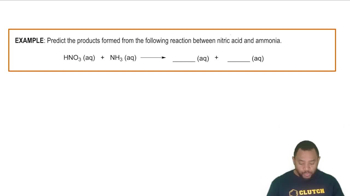Here are the essential concepts you must grasp in order to answer the question correctly.
Acid-Base Reactions
Acid-base reactions involve the transfer of protons (H+) between reactants. In this context, an amine (which acts as a base) reacts with a carboxylic acid (which acts as an acid) to form an ammonium salt. The amine accepts a proton from the acid, resulting in a positively charged ammonium ion and a negatively charged carboxylate ion.
Recommended video:
Condensation Reactions
Condensation reactions occur when two molecules combine to form a larger molecule, typically with the loss of a small molecule such as water. In the case of amines and carboxylic acids, the reaction can lead to the formation of an amide, where the amine and acid combine, releasing water as a byproduct. This type of reaction is crucial in forming peptide bonds in proteins.
Recommended video:
Products of Amine Reactions
The products of amine reactions depend on the nature of the reactants and the reaction conditions. In the case of the reaction between an amine and a carboxylic acid, the primary products are an ammonium salt if classified as an acid-base reaction, or an amide and water if classified as a condensation reaction. Understanding the specific reactants helps predict the outcome of the reaction.
Recommended video:

 Verified step by step guidance
Verified step by step guidance


